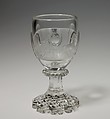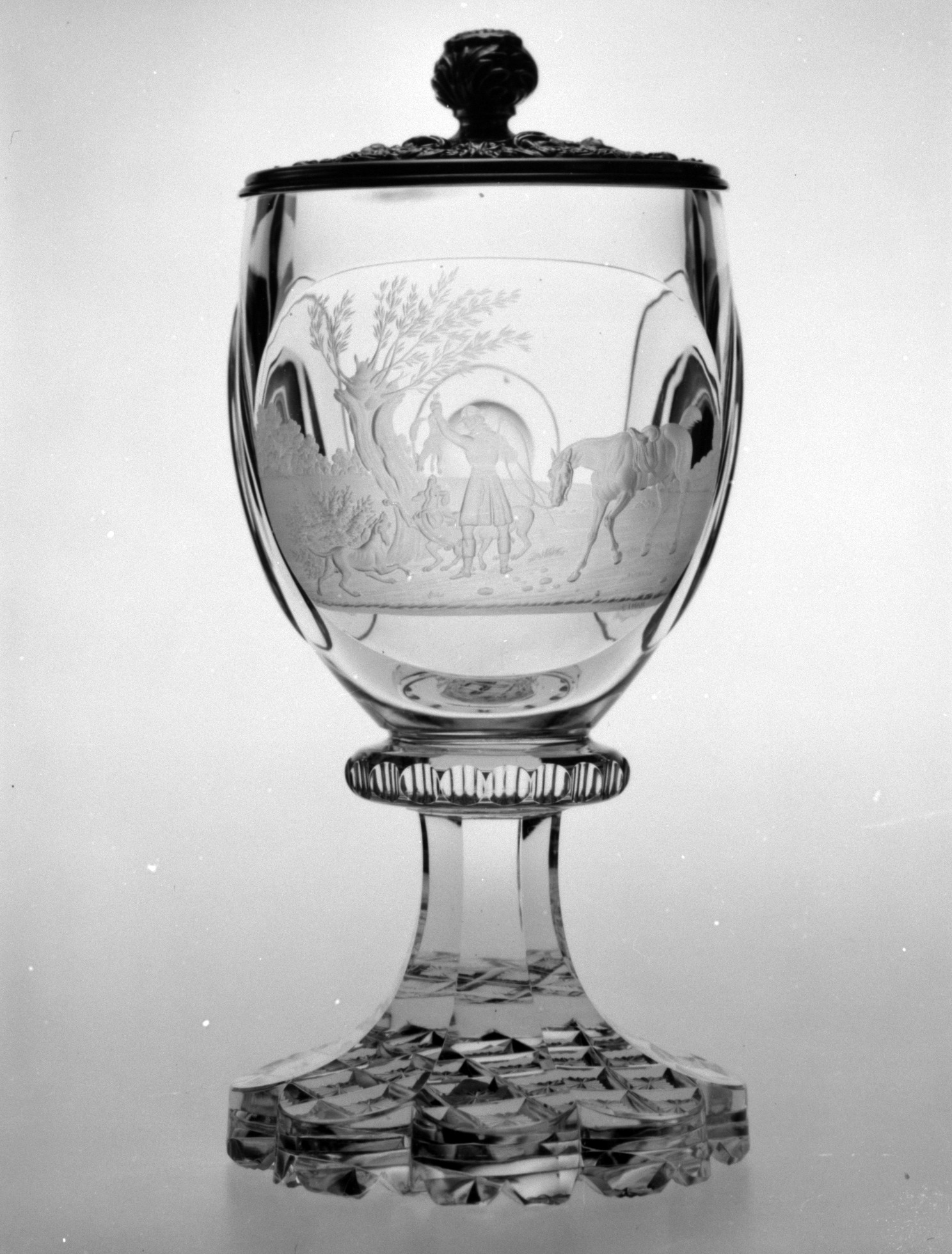Goblet
Engraver Dominik Bimann Bohemian
Not on view
The taste for engraved glass, which accounted for a part of German and Austrian glass production throughout the eighteenth century, fell away toward the end of the century. However, engraving on glass did continue in the first half of the nineteenth century, especially for private clients by self-employed artisans. Dominik Biemann was one of the best of these. He was trained as a glass engraver with the wheel at Karkachov, then in Austrian Silesia (modern Czechoslovakia), until 1825. He later worked in Prague, where in the sixteenth century engraving on glass had been attempted for the first time in Europe since the Roman period. Based in Prague, Biemann made himself available to receive orders for portraits and other special commissions during the season at the fashionable spa-resort of Franzenbad, where he settled in 1828. The silver cover of this goblet (1982.97.10b) is hallmarked for Vienna, 1854. The invention of the daguerreotype diminished interest in engraved portraits after about 1840; hunting and genre scenes like the one on this piece are more typical of work from the last years of Biemann’s life.
Due to rights restrictions, this image cannot be enlarged, viewed at full screen, or downloaded.
This artwork is meant to be viewed from right to left. Scroll left to view more.




